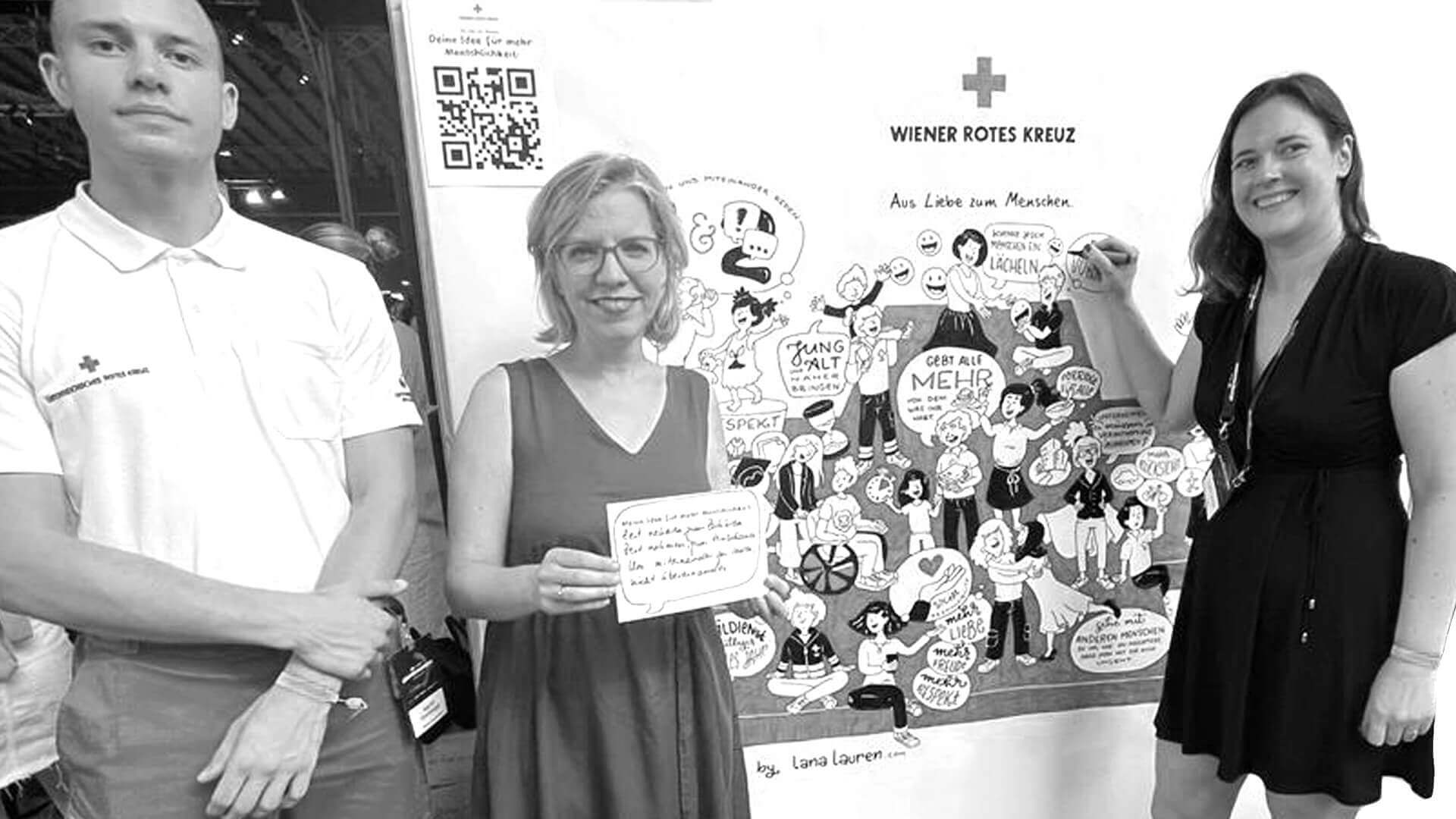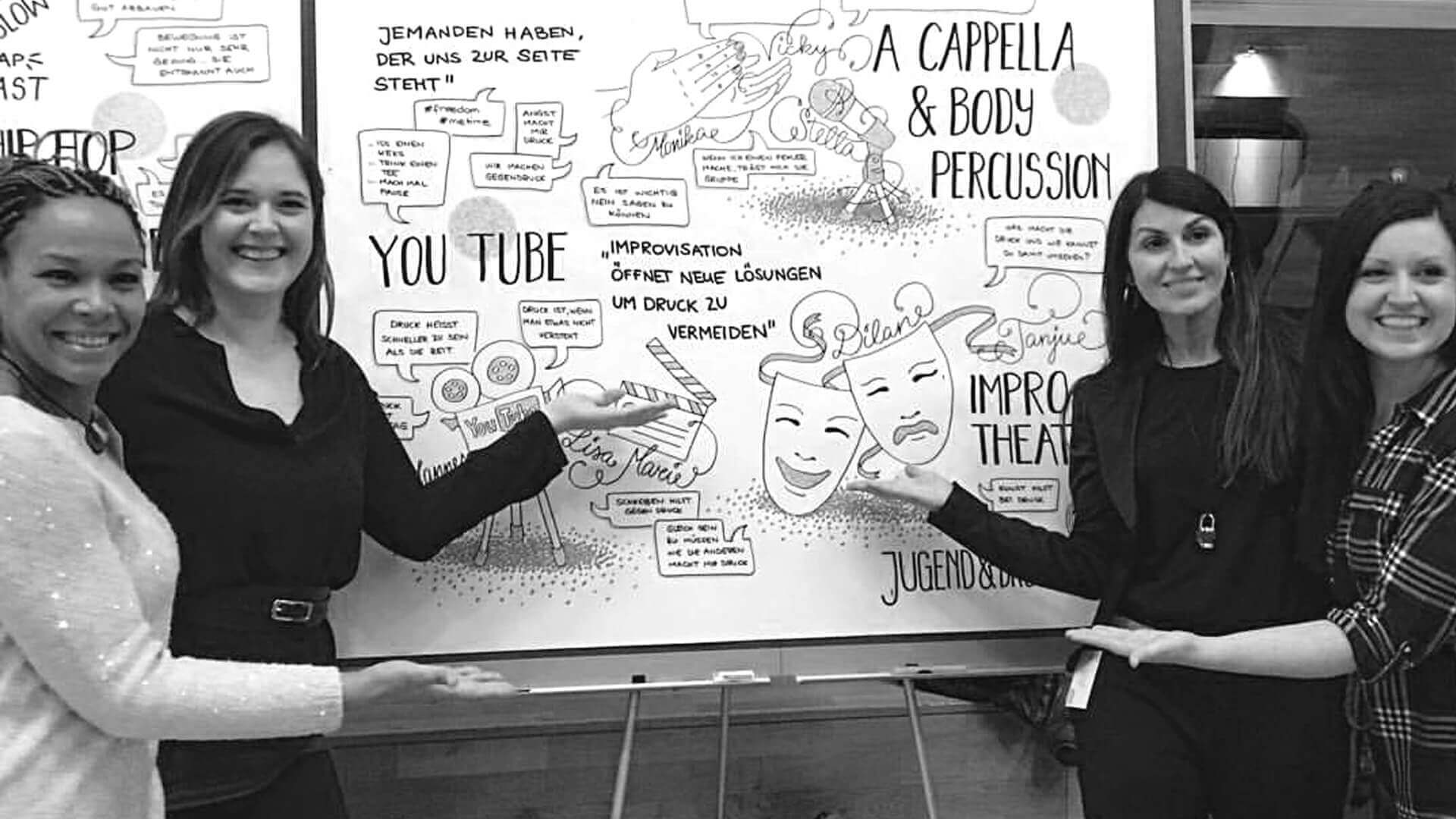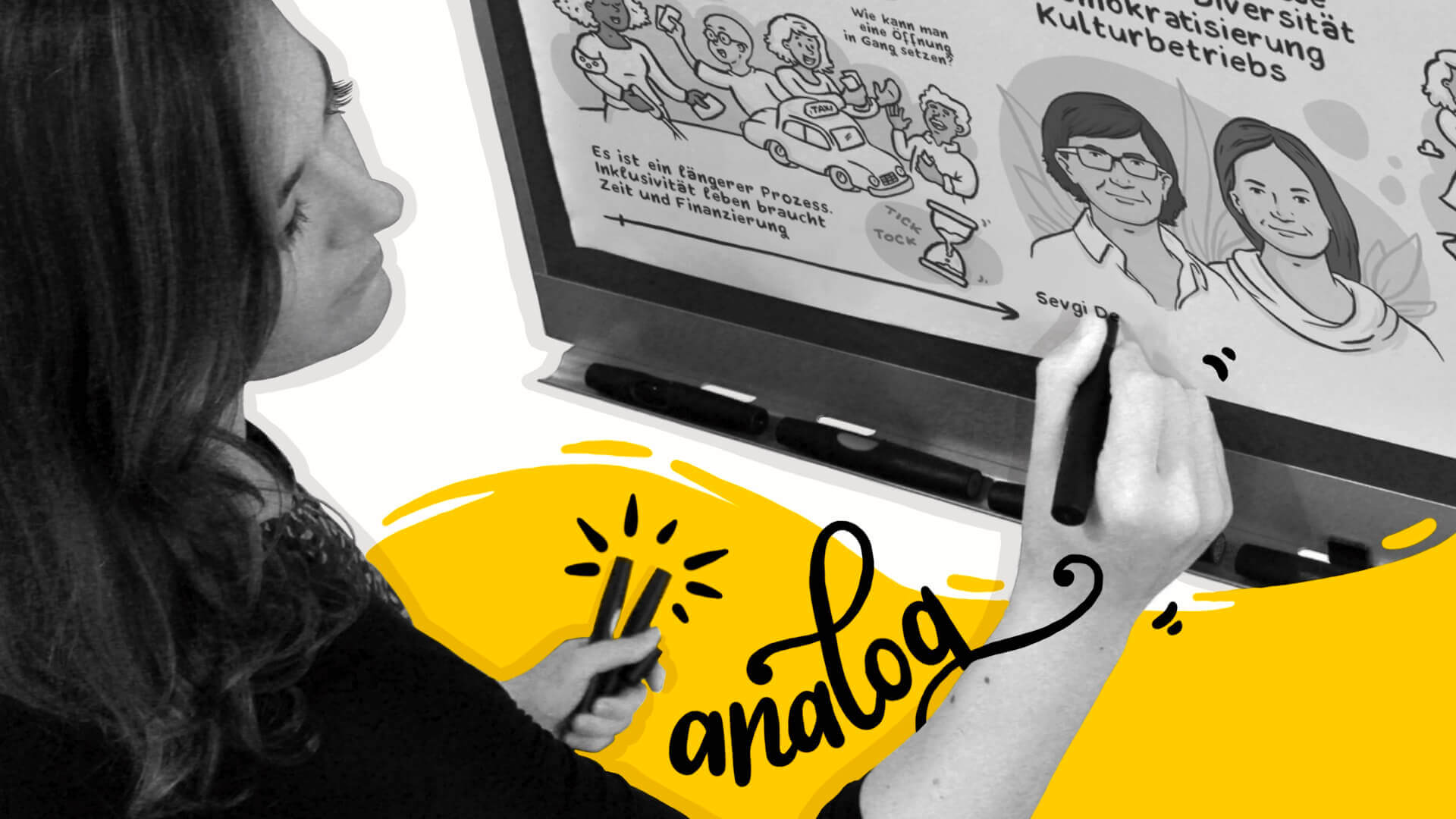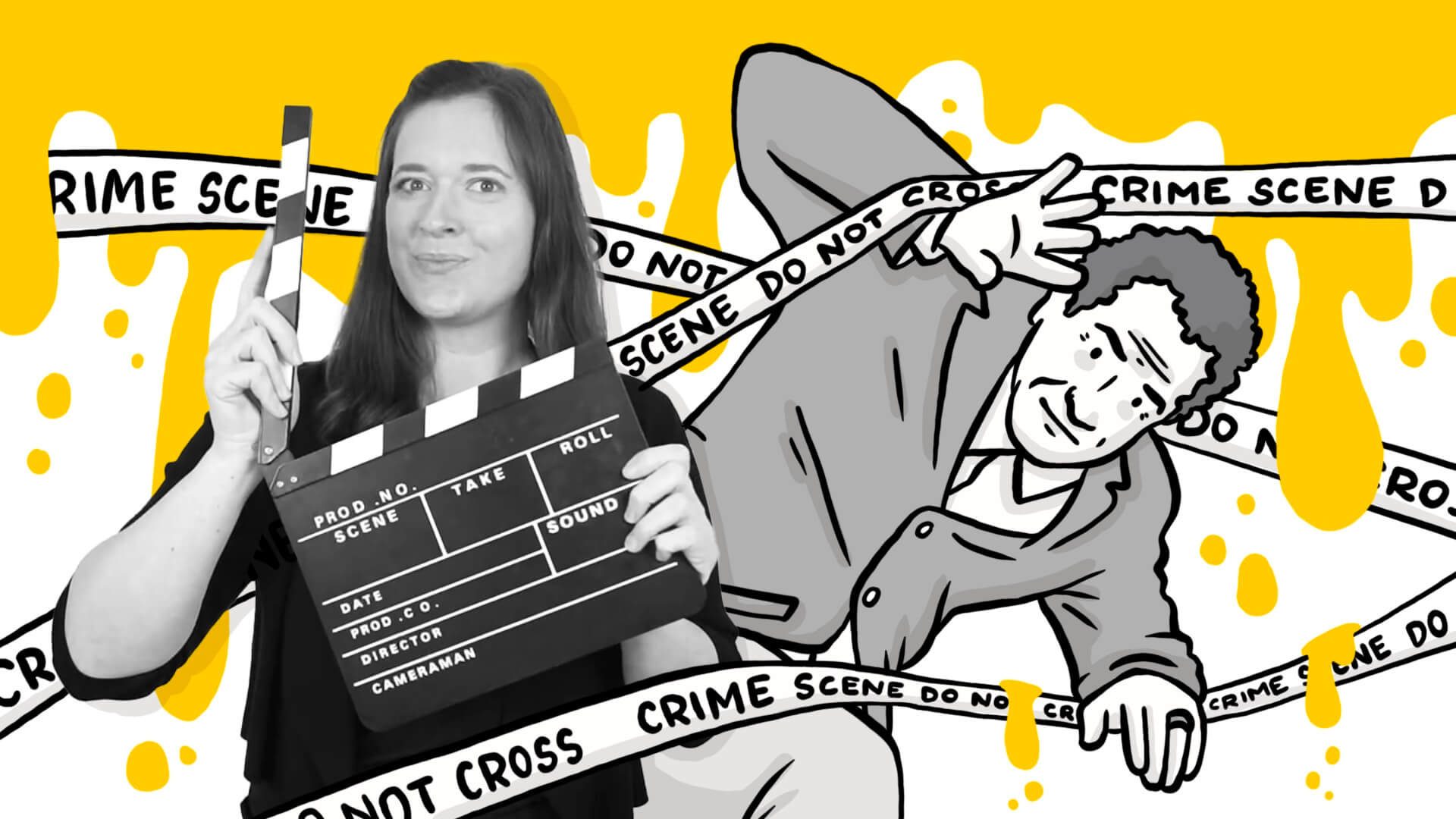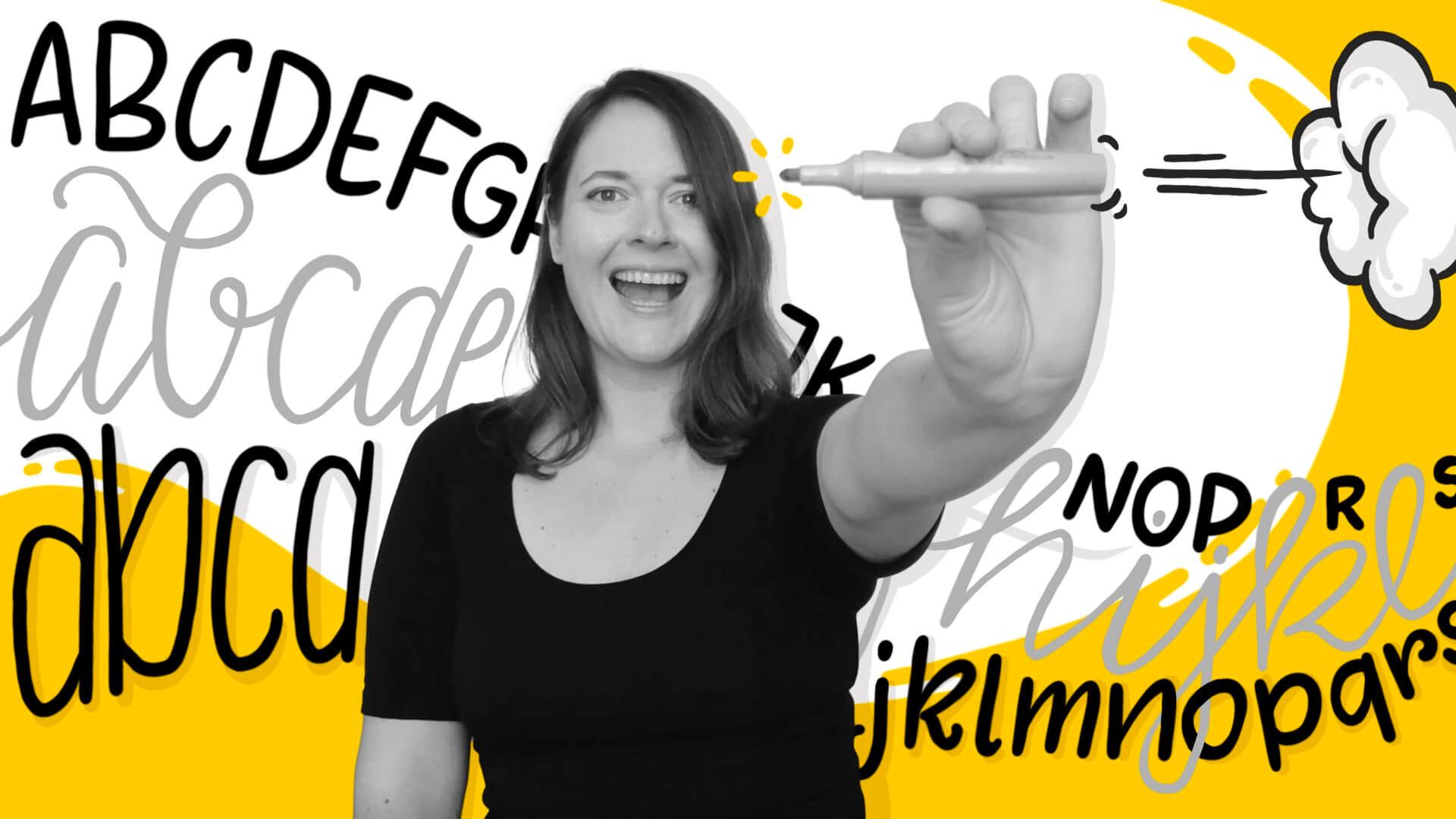What is (Analog) Graphic Recording?
When content is presented, discussed, or developed, it can be visually documented with Graphic Recording. This means that what is said (and shown) is translated into images in real-time, complemented by short texts. This creates a record that not only helps participants understand and concentrate during the event but can also be used beyond the event to communicate the content.
Many different formats can be accompanied: seminar, workshop, keynote speech, panel discussion, strategy meeting, presentation, group work, award ceremony, result presentation, product introduction,… to name just a few.
Three formats can be distinguished:
- Analog Graphic Recording: Content from meetings, workshops, panel discussions, or presentations is captured live on-site and in real-time with pen and paper (this is what this blog post will be about)
- Digital Graphic Recording: Content from events is captured live on-site and in real-time with a graphic tablet (more about this here)
- Remote Graphic Recording: Content from webinars, digital meetings, or online events is captured in real-time with a graphic tablet and transmitted digitally.
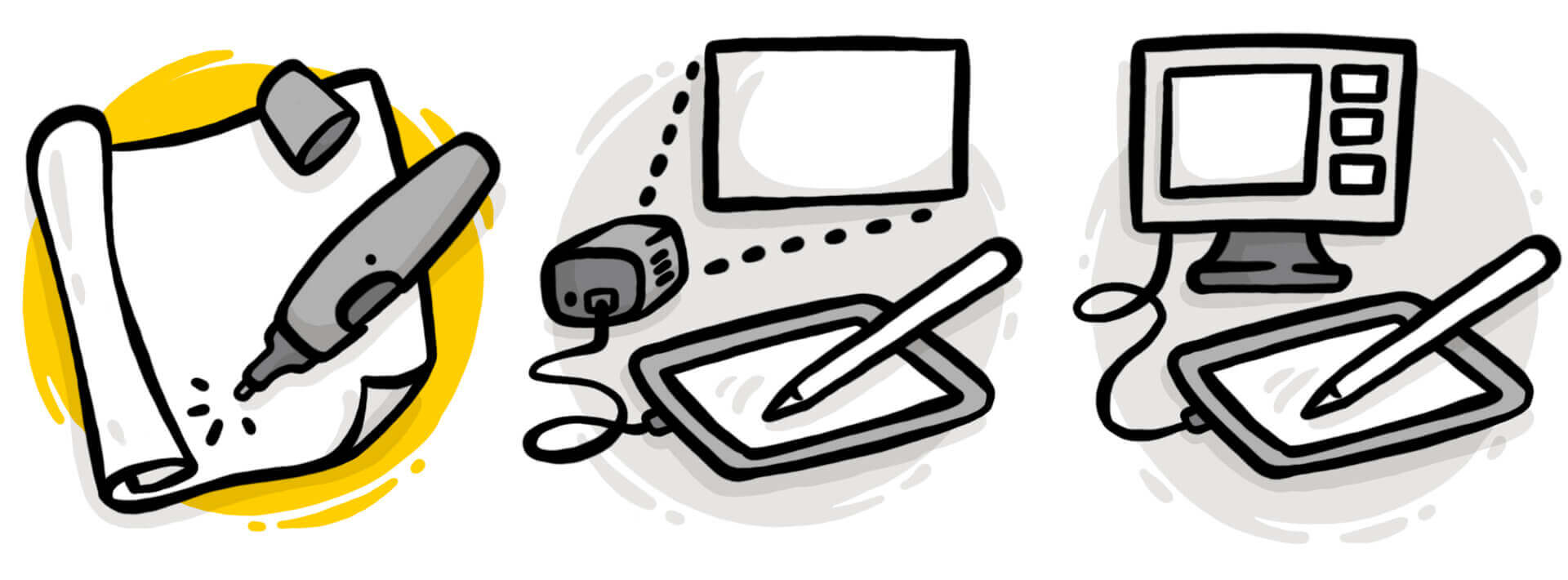
What questions should be asked before a graphic recording?
When designing the analog graphic recording, it is particularly important to carefully consider in advance which content should be included, as the analog format does not allow for subsequent changes. The following points regarding content and design should therefore be thoroughly discussed by the graphic recorder with the organizer before the event:
- Corporate Design: Are there company colors or specific color codes established for the event that should be reflected in the graphic recording? Is there a font that the text in the graphic recording should adhere to (serif, sans, or script)? Is there an already established visual language in the company that should be taken into account for the graphic recording?
- Logos: Should the company logo appear in the graphic recording? Are there other logos (from partners, sponsors, etc.) that should be included?
- Portraits and Names: Are there individuals (speakers, team members, experts, etc.) who should be named, or should the focus be on the content (no names)? Should individual people be portrayed in the graphic recording?
- Title of the event, location, and date: Should the title, location, and/or date be included in the image?
How big should the analog graphic recording be?
When drawing on paper, the question of how large the sheet should be to capture the content arises relatively quickly. Do you want a big picture or many individual images? The right answer is: “It depends.” Here are a few points to consider when making the right choice:
How big is the room?
The larger the room, the larger the sheet should be so that participants can see the drawing clearly. In particularly large halls, the image should, if possible, also be projected onto a screen with a projector so that everything is still legible in the last rows.
Small rooms, on the other hand, often do not provide enough space for a large drawing area. Here, the choice may be influenced by what is feasible in terms of space.
How will the images be used after the event?
Whether a large image or several small images make more sense can often be decided based on their later use. Here are a few application examples:
- If there are multiple speakers, and each should receive their own graphic recording at the end, it makes sense to draw several individual images. In such cases, I create one graphic recording in flipchart size per presentation and photograph them before handing them over to the speakers, so that the organizers have a digital copy of the images.
- Will the images be used for social media? Then it is often helpful to draw several square images that can be easily integrated into the various platforms. The individual squares can range from A3 to bulletin board size.
- If you want to hang the image at the end as a complete work, it is best to draw everything on one sheet. This big picture is usually created in the format of 1.5 x 3 meters.
How long is the event?
When planning the size, one should always have a realistic idea of what can be accomplished in the available time. This strongly depends on the drawing speed of the graphic recorder, but also on how dense the content is and whether or how much preparation is done.
What material is used for analog graphic recording?
For analog graphic recording, you actually only need “pen and paper.” However, for a good result, you should pay attention to the following criteria when making your selection:
The Paper
I recommend at least 120g/m2. If possible, I even opt for 200g/m2. Why? Sturdier paper not only looks more high-quality (which can be an important factor when the image is handed over to speakers or organizers after the event), but it also ensures that the color does not bleed through easily (thus protecting the underlying surface). Additionally, thicker paper wrinkles less quickly and does not crumple easily when hung up or taken down. This way, the image remains well-preserved for a longer time and can serve as a working and discussion basis or as a reminder of the discussed content long after the event.
My choice: Fabriano Accademia Drawing Paper Roll - 1.50m x 10.0m
The Pens
When selecting pens, it is important to ensure that they do not “bleed” - meaning they do not seep through the paper. This is especially important if the paper is attached to a wall, as you want to leave a lasting impression while also keeping the walls clean.
When working with color, it is crucial that the pens used for writing and drawing do not smudge when coloring areas. The vaporization refers to the liquid contained in the pens. Many flipchart pens have ink whose chemical composition causes it to evaporate while drawing. This not only has a strong odor but is also hazardous to health if you spend a lot of time drawing. Therefore, pay close attention to the composition of the ink.
My choice: Neuland flipchart pens No.One Outliner Round Tip, No.One Art Outliner Brush Tip, and FineOne Outliner Round Tip
The Drawing Surface
The paper can either be fixed to a wall with masking tape or placed on its own drawing wall in the room. The wall should be smooth (no grooves, textured wallpaper, or holes) and flat so that drawing on it is possible. If a drawing wall is used, it has the advantage that the image can be placed not only at the edge of the room but also within the room. It is important that this mobile drawing wall is stable and does not slip while drawing.
What should be considered on-site?
Where should the analog graphic recording be positioned in the room?
To document the content well, the graphic recorder should be within hearing and sight of the stage. Additionally, the image should be clearly visible to the participants while drawing. Typically, these two requirements mean that the graphic recording is best placed either directly next to the stage or on the stage itself.
What equipment should be provided on-site for the analog graphic recording?
The graphic recorder brings their own pens and paper. What else is needed?
- Standing table: a standing table next to the graphic recording for storing pens and other materials.
- Stool or chair: the lower parts of the image are easier to draw while sitting. Ideally, there should be a stool (or a chair without armrests) available for the graphic recorder.
- Water: a pitcher of water and a glass are always very welcome. While there is usually a buffet for participants at larger events, the graphic recorder should not be overlooked when it comes to water.
- Camera: if desired, the image can be transmitted to the stage via a camera. This requires a camera that has a good view of the entire graphic recording or a dedicated cameraman/woman.
What are the advantages of analog graphic recording?
Admittedly, almost all graphic recordings now take place digitally (see here). And while digital drawing offers many advantages, there are still arguments for traditional drawing with pen and paper:
No power requirement
Drawing on an iPad always requires a power source. Not to mention the projector. Paper and pen work entirely without technology. For events that take place outdoors, for example, or that want to completely avoid electricity for ecological reasons, this can be an important factor.
There is an original
The magic of pen and paper is something truly special. The original that is created during the event cannot be easily replicated. Those who appreciate this artwork character will find analog graphic recording to be a good choice.
Interaction with participants
The analog image is particularly accessible, and participants can, if desired, add ideas on post-its or contribute individual words or icons in interactive formats. No special knowledge or skill is required for this.
Examples of Analog Graphic Recording
Lastly, here are a few photos from events I accompanied, showing how it can look in practice.

